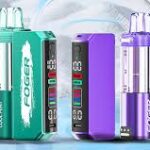Global manufacturers are under constant pressure to produce more parts at a lower cost without sacrificing quality. Against this backdrop, reducing cycle time has become one of the most effective strategies for increasing production and optimizing factory performance. One of the most efficient ways to achieve this is through the use of multi-cavity molds. By producing multiple identical parts in a single molding cycle, manufacturers can significantly increase production without increasing the number of machines or floor space. However, the effective operation of multi-cavity molds depends on a key factor: the performance and configuration of the molding machine itself.
The Relationship Between Multi-Cavity Molds and Molding Machine
The molding machine (also known as the injection molding machine) is the heart of the plastics manufacturing process. It performs the fundamental tasks of injecting molten material into the mold, cooling it, and ejecting the finished product. In a single-cavity system, one part is produced per cycle. However, a multi-cavity mold can mold multiple parts simultaneously, effectively increasing production without increasing cycle times.
This setup can significantly reduce the cost per part and optimize the use of energy, materials, and labor. However, multi-cavity configurations also place higher demands on the molding machine’s performance. The injection molding machine must provide uniform injection pressure, maintain consistent temperature control, and provide stable clamping force across all cavities to ensure consistent part quality. If the injection molding machine’s capacity or precision is insufficient, shortening the cycle time can be counterproductive, resulting in incomplete filling, uneven cooling, or flash defects.
Molding Machine Power and Injection System: Balancing Pressure and Speed
When using multi-cavity molds, one of the most critical factors in reducing cycle time is the power and injection system of the molding machine. Multi-cavity molds require more molten material to be injected in the same amount of time. This means the injection unit must be powerful enough to deliver sufficient melt volume at a consistent pressure and speed to all cavities.
Servo-driven injection molding machines offer significant advantages in this regard. Unlike traditional hydraulic presses, servo systems precisely control injection speed and pressure, enabling fast and stable filling even with high-cavity configurations. The servo motor dynamically adjusts throughout the injection process, ensuring that each cavity receives the correct amount of material with the proper viscosity.
Furthermore, molding machines equipped with high-speed injection screws and optimized flow paths can shorten the filling phase, thereby reducing overall cycle time without compromising quality. However, this balance must be struck, ensuring sufficient plasticizing capacity. Insufficient screw recovery time can offset increased injection speeds, resulting in longer overall cycle times.
Ensuring Stability and Precision Under High Pressure
When using multi-cavity molds, the injection molding machine’s clamping system becomes a critical performance component. Each additional cavity increases the total clamping force required because the injection molding machine must maintain a larger sealing area during injection. If the clamping unit doesn’t apply pressure evenly, the mold halves may slightly separate, resulting in flash, dimensional deviation, or premature mold wear.
To address this issue, modern injection molding machines are equipped with servo-hydraulic or fully electric clamping systems, which provide precise, consistent pressure control. For example, servo-electric clamping units ensure fast, smooth movement and consistent pressure application, reducing setup time and improving repeatability. Furthermore, intelligent clamping systems use sensors to monitor real-time force distribution, enabling operators to fine-tune parameters for optimal performance. This not only minimizes defects but also extends mold life.
The Hidden Key to Cycle Time Reduction
While injection and clamping are the most visible stages of the molding process, cooling and ejection are often the longest stages of the cycle and therefore present the most significant opportunities for optimization. In multi-cavity molds, uneven cooling can cause parts in different cavities to solidify at different rates, leading to warpage, dimensional inconsistencies, or increased cycle times. The molding machine’s temperature control system plays a crucial role here. Machines equipped with precise temperature controllers and efficient mold cooling channels ensure uniform cooling across all cavities. This uniformity reduces cooling time and allows for faster ejection without part deformation. Similarly, high-speed ejection systems integrated with servo or pneumatic mechanisms ensure smooth and simultaneous ejection of multiple parts. Optimized ejection sequences prevent mold sticking or part damage, allowing for a faster start of the next molding cycle.
Data-Driven Injection Molding Machine Optimization
Modern injection molding machines increasingly rely on intelligent control systems to achieve precision and repeatability. With multi-cavity molds, subtle differences in pressure, temperature, or time can have amplified effects across cavities, leading to significant quality fluctuations. Intelligent control systems address this challenge through real-time monitoring, adaptive feedback, and process automation.
Advanced injection molding machines equipped with integrated Industry 4.0 technologies can automatically adjust injection speed, holding pressure, or cooling time based on sensor data. This ensures that each cavity is treated uniformly, even under varying production conditions such as temperature fluctuations or material batch variations.
Efficiency and Precision Drive the Future of Injection Molding
As manufacturing demands continue to evolve, utilizing multi-cavity molds to shorten molding cycles has become critical to maintaining global competitiveness. However, the key to success lies in the ability of the molding machine to deliver consistent power, precision, and efficiency. Servo injection molding machines offer unparalleled advantages in speed, energy efficiency, and intelligent control, making them an ideal choice for factories seeking to optimize production and reduce costs. While hydraulic injection molding machines offer powerful performance, they can struggle to maintain consistent performance in high-cavity, high-precision applications.










